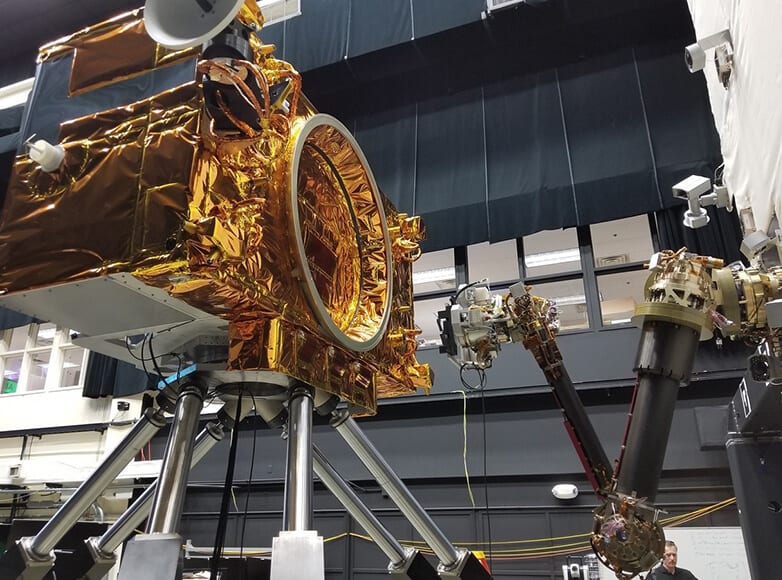News

Beaming Solar from Space – the Future Commercial Space Tech
Recently, researchers at Caltech demonstrated the feasibility of beaming energy from orbit to the surface of Earth. Although the concept of gathering solar power in Earth orbit and transmitting it to the surface has been hypothesized and researched for decades, the demonstration by Caltech was the first practical demonstration, albeit at a very small scale. To go from small-scale demonstration to powering cities will take some time and engineering innovation, but the groundwork has been laid.
One of the biggest drawbacks of solar power on Earth is the fact that the energy coming from the Sun is refracted and reflected as it moves through the atmosphere, which greatly reduces how much energy reaches solar panels. In Earth orbit, solar energy is not subject to atmospheric distortion, so more energy can be gathered. Also, depending on the orbit, a spacecraft can remain in the sun all the time. However, getting the gathered energy from orbit to the surface remains a challenge.

The MAPLE instrument, which demonstrated wireless transmission of energy from Earth orbit to the surface. Credit: Caltech
To scale power collection and transmission from orbit to the surface to provide power for cities, it will be necessary to address the challenges faced by assembling solar arrays with enough area to generate the power. The International Space Station (ISS) has about 27,000 square feet (half the area of a football field) of solar panels generating enough power for more than 40 homes. However, the construction of the ISS was carried out by astronauts over more than a decade, with multiple Space Shuttle missions. To construct a bank of solar arrays to power large communities requiring megawatts of power will require innovation.
Motiv Space Systems has worked closely with NASA on the on-orbit servicing, assembly, and manufacturing (OSAM) missions, which will demonstrate the use of Motiv’s robotic systems to carry out the level of on-orbit assembly that will be required to build a large-scale solar generating system to beam energy to Earth. In fact, on the OSAM-1 mission, Motiv robotic systems will be contributing to the high-precision assembly of an antenna and boom. Additionally, the mission, operated by NASA’s Goddard Space Flight Center, will demonstrate the ability to refuel a spacecraft in Earth orbit.

OSAM-1 spacecraft. Credit: NASA GSFC
Although the orbit of the satellite can be designed to maximize the time the solar array is in the Sun, it will still be necessary to maneuver the array itself to keep it pointed directly at the source of energy. Technology such as that developed by JPL and utilized by Motiv on the COLDArm will ensure the mechanisms that move the array remain operational in the extreme cold of space, without the need for external heaters that would reduce the amount of power available for beaming to Earth.
Space exploration and the utilization of space-based technologies to enhance life on Earth have grown tremendously in the last decade. Engineering marvels that were once only a thought, such as beaming energy from Earth orbit to power homes on Earth, are becoming realities. And with the robotics and mechanisms developed by Motiv, the capability to fully realize these marvels is closer than ever.